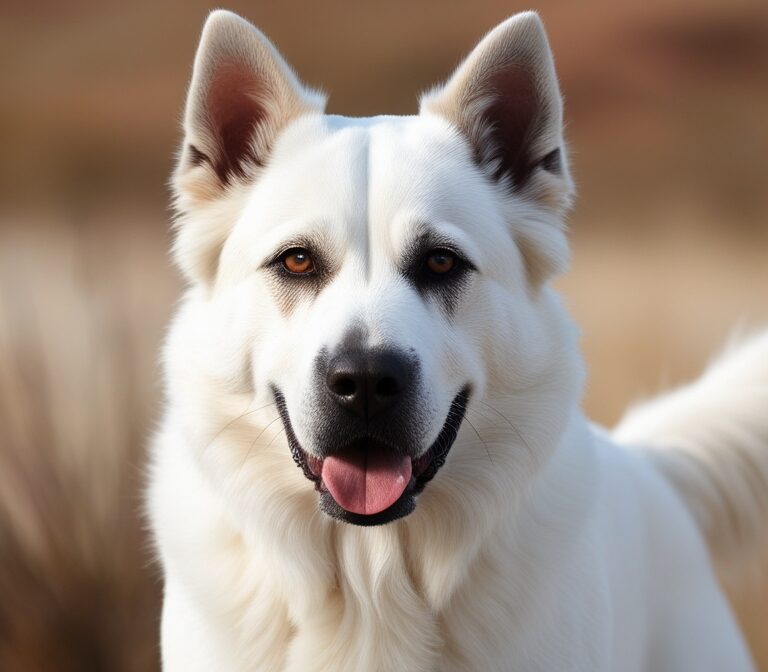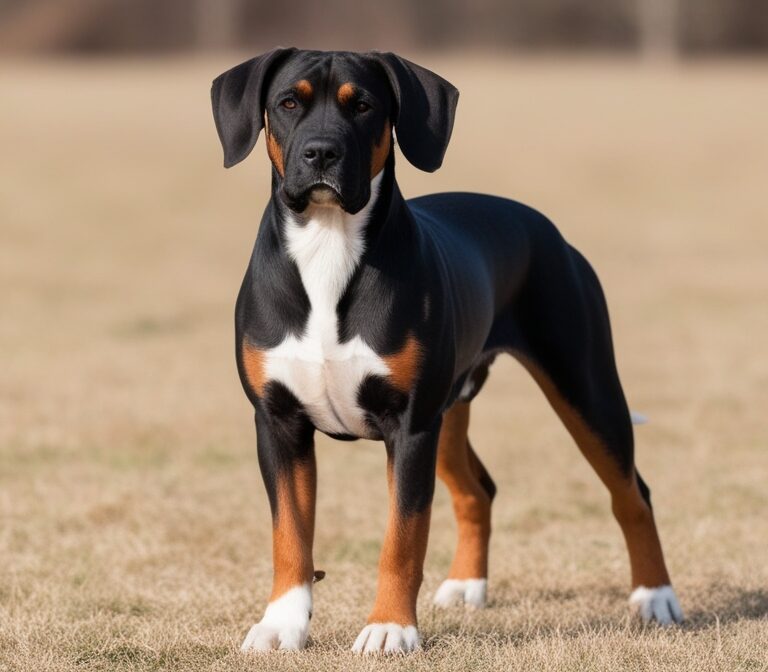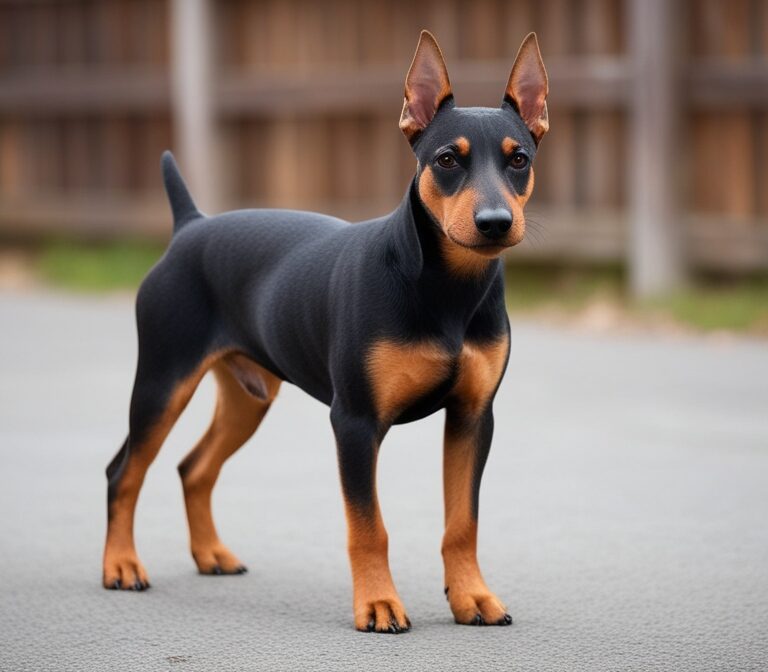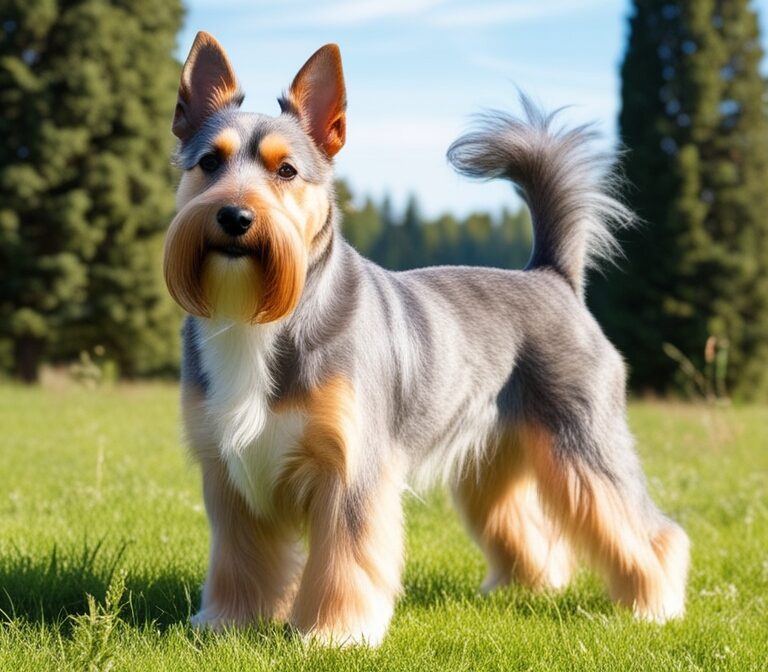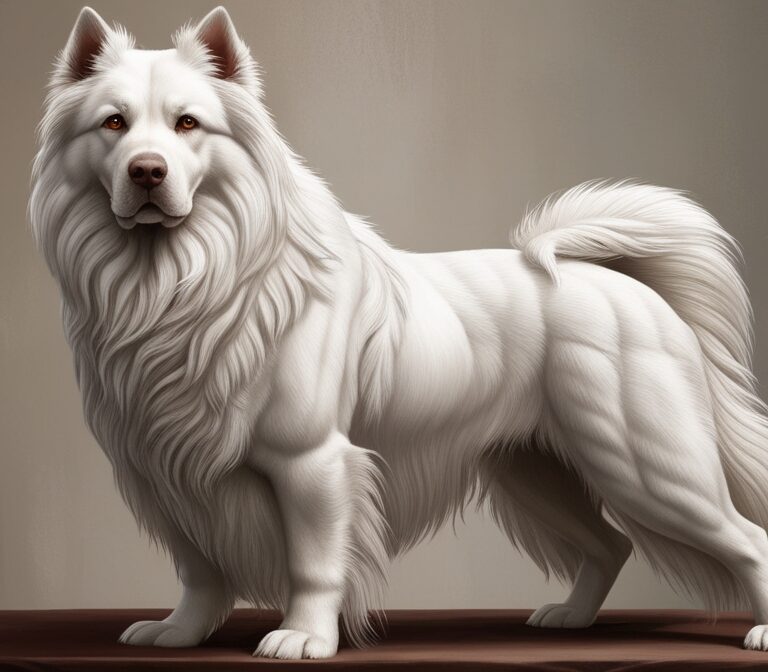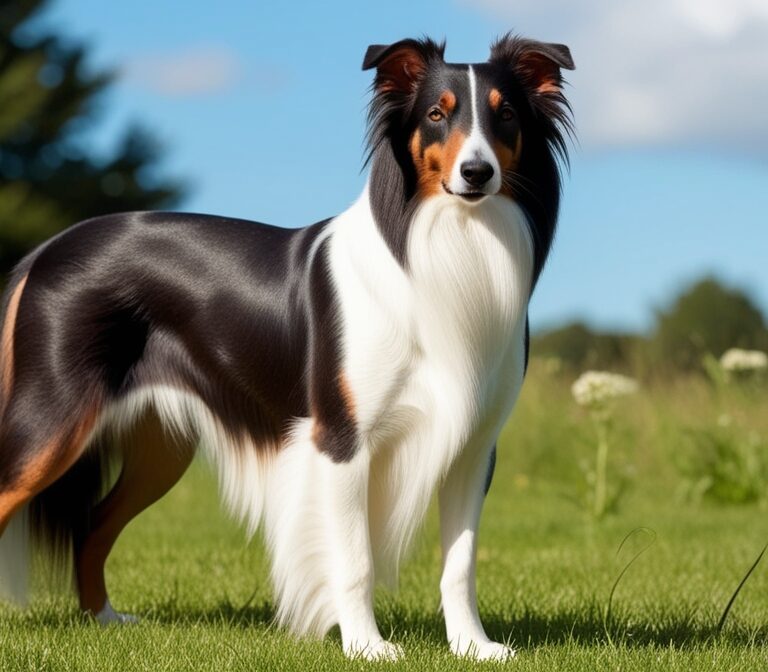The Pumi Dog: A Complete Guide to the Hungarian Herding Breed
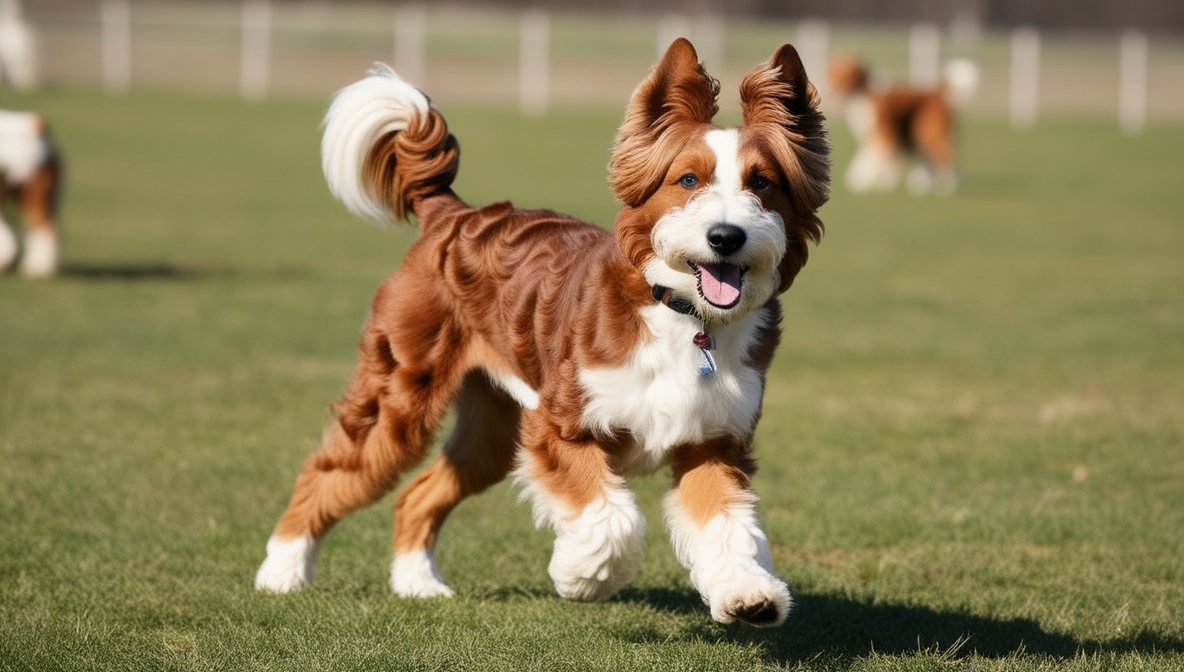
What is a Pumi Dog?
The Pumi dog is a medium-sized Hungarian herding breed that stands out due to its corkscrew-curled coat, expressive ears, and nimble-footed agility. Classified under the herding group by the American Kennel Club (AKC), the Pumi is both a skilled working dog and a lively companion pet. Unlike many purely companion breeds, the Pumi has retained much of its herding instinct and protective temperament, making it highly valued by farmers and dog enthusiasts alike.
Originating in Hungary, the Pumi is closely related to other Hungarian dogs such as the Puli and Mudi, but it has a unique appearance and personality. Its erect ears with floppy tips, compact body, and constantly alert expression distinguish it from its relatives. While the Puli is known for long cords and the Mudi for straighter hair, the Pumi’s curls set it apart.
In modern households, the Pumi dog is recognized for its intelligence, liveliness, and protective instincts. This makes it a suitable breed for active families, especially those interested in dog sports like agility, obedience, and flyball. However, because of its reserved nature with strangers, the Pumi also acts as a reliable watchdog.
From an SEO perspective, searchers often want to know: What is a Pumi dog? The simple answer is: It’s a versatile herding breed from Hungary that excels both as a working farm dog and as an energetic companion, recognized by its distinctive corkscrew coat and lively temperament.
Origin of the Pumi: Hungarian Herding Tradition
The Pumi dog traces its roots back to 17th and 18th century Hungary, where shepherds selectively bred dogs for their herding skills, agility, and endurance. The breed was developed by crossing the Puli with Western European herding dogs such as French Briards and various German terriers. This crossbreeding created a compact, highly trainable dog that could handle the challenging terrains of Hungarian pastures.
The word “Pumi” itself reflects the breed’s cultural roots, as it was historically used to distinguish this type of dog from the Puli. While the Puli was valued for guarding larger flocks, the Pumi excelled at working closer to livestock, especially sheep, goats, and pigs. Farmers prized the breed’s ability to make quick, darting movements and use vocalizations to guide livestock, traits that are still evident today.
Recognition of the breed as distinct occurred in the early 20th century, and by 1921, the Hungarian Kennel Club established the first breed standard for the Pumi. Later, the Fédération Cynologique Internationale (FCI) acknowledged the Pumi as an official breed, and it eventually gained recognition by the AKC in 2016, placing it into the Herding Group.
The Hungarian herding tradition shaped the Pumi into more than just a farm dog. Its intelligence, protective instincts, and high energy levels reflect centuries of selective breeding. Even though most Pumis today live as companion animals, their heritage continues to influence their behavior, temperament, and working drive.
This history matters not only to breed enthusiasts but also to potential owners who wonder: Why does the Pumi act so lively and alert indoors? The answer lies in its working heritage—a dog bred for constant movement, quick decision-making, and close interaction with livestock naturally brings that energy and responsiveness into family life.
General Characteristics of the Pumi
The Pumi dog is best described as a compact, medium-sized herding breed with a distinct combination of athleticism, intelligence, and charm. At first glance, many people notice the erect ears with floppy tips and the dense corkscrew-curled coat that give the breed its playful yet alert look. These physical attributes aren’t just for appearance—they reflect the Pumi’s working heritage as an agile and attentive farm dog.
A typical adult Pumi stands between 15 to 18.5 inches (38–47 cm) at the shoulder and weighs 22 to 29 pounds (10–13 kg). Their size makes them large enough to handle livestock effectively, yet small enough to remain nimble and quick on their feet. The breed’s body is slightly longer than tall, and its backline slopes gently from withers to croup, allowing for smooth movement across rugged terrain.
The coat is a defining feature—consisting of a mixture of soft undercoat and harsher topcoat hairs that form natural curls. This texture helps protect the dog from harsh weather conditions while requiring moderate grooming to prevent matting. Coat colors include black, gray, fawn, and white, though the gray shade is particularly common in the breed.
Personality-wise, the Pumi blends high energy levels with keen intelligence. It is a biddable dog, meaning it is eager to work closely with its human handler. Yet, because of its strong instincts, the Pumi can sometimes show independent decision-making—a trait valuable for herding but one that requires proper training in a domestic environment.
Another notable characteristic is the Pumi’s voice. Farmers valued this dog for its bark-based communication, as it could control livestock through vocal signals. Today, this means the breed is more vocal than average dogs, which can be charming or challenging depending on the owner’s lifestyle.
In summary, the Pumi dog is a balanced blend of strength, agility, and liveliness. Its medium size, curly coat, and expressive personality make it instantly recognizable, while its strong herding instincts and loyalty ensure that it thrives in active, engaged households.
Size, Weight, and Appearance
The Pumi’s physical build is one of the reasons it has been such a successful herding dog for centuries. Unlike larger breeds such as the German Shepherd, the Pumi is smaller and more agile, which allows it to maneuver quickly around livestock. At the same time, it retains enough strength and stamina to work long hours in the field.
Size and Weight Standards:
- Height: 15–18.5 inches (38–47 cm)
- Weight: 22–29 pounds (10–13 kg)
- Proportion: Slightly longer than tall, giving it a rectangular silhouette
The breed’s head is narrow and wedge-shaped, with a pointed muzzle and dark, almond-shaped eyes that convey intelligence and attentiveness. The ears are particularly distinctive: they stand erect but the tips fold forward, creating the breed’s trademark alert expression.
The coat deserves special attention in terms of appearance. The corkscrew curls are dense, springy, and about 7 to 13 cm long, forming a protective covering over the entire body. This coat is weather-resistant and naturally keeps the dog comfortable in both hot and cold climates. Unlike double-coated breeds that shed heavily, the Pumi has a low-shedding coat, though it does require regular grooming to maintain its health and shape.
Color variations include:
- Black
- Gray (light to dark shades, often with silver tones)
- Fawn (ranging from pale cream to rich red)
- White
When evaluating the Pumi’s appearance in dog shows or breeding standards, judges look for balance and proportion, not extremes. The Pumi should appear athletic and ready to work, not bulky or fragile. Its tail, usually carried in a semicircle over the back, enhances its lively look.
Owners often describe the Pumi as a “perpetual motion machine”—its body language, upright ears, and expressive eyes always suggest curiosity and readiness. The breed’s appearance is not just about beauty but about functionality. Every part of the Pumi’s body is designed for herding efficiency, from its light frame to its quick reflexes.
Coat Type: The Corkscrew Curls
The corkscrew-curled coat is arguably the most distinctive feature of the Pumi dog. Unlike straight-haired or corded breeds, the Pumi’s coat combines the softness of a woolly undercoat with the coarser guard hairs of the outer coat, resulting in a springy texture. This makes the coat both functional and unique in appearance.
The curls measure between 7 and 13 cm in length, forming tight ringlets across the body. This coat is not only aesthetically pleasing but also serves practical purposes. In the breed’s native Hungary, where weather can range from scorching summers to snowy winters, the Pumi’s coat provided insulation, protection against rain, and resistance to dirt. The curls naturally shed debris, helping keep the dog relatively clean while working in fields.
Unlike the Puli, which develops long cords, or the Mudi, which has a wavy coat, the Pumi’s corkscrew coat remains short and manageable. It requires brushing every 2–3 weeks to prevent matting, as the undercoat can tangle. However, excessive brushing can disrupt the natural curl pattern, so owners are advised to lightly comb and then moisten the coat to allow curls to reform naturally.
Another grooming requirement is occasional trimming. Show dogs often have their coats shaped to emphasize the breed’s square outline, while working Pumis may need less frequent styling. Importantly, the Pumi’s coat is considered hypoallergenic to a degree, making it a suitable choice for allergy-sensitive households, though no dog is truly 100% hypoallergenic.
Coat color adds further diversity, ranging from black and gray to fawn and white. Puppies are sometimes born with darker shades that lighten as they age, particularly in gray-coated dogs.
The corkscrew coat not only defines the Pumi’s aesthetic appeal but also highlights its heritage as a hardworking farm dog. Its resilience, adaptability, and minimal shedding contribute to the breed’s popularity among both farmers and modern families.
Future of the Pumi Breed
The Pumi’s future looks bright as more people worldwide discover its unique charm. Once considered a rare breed outside Hungary, the Pumi dog gained international recognition after the AKC officially accepted it into the Herding Group in 2016. This milestone significantly increased the breed’s visibility in the United States and beyond.
Today, enthusiasts are focused on preserving the Pumi’s original traits: its corkscrew-curled coat, nimble build, and intelligent temperament. Breed clubs and organizations encourage responsible breeding to prevent dilution of its herding instincts while promoting the Pumi as both a working dog and a family companion.
As urbanization increases, the Pumi’s adaptability may also enhance its appeal. Unlike some herding dogs that struggle outside rural settings, the Pumi can thrive in city apartments or suburban homes—provided it gets adequate daily exercise and training. Its low-shedding coat also makes it attractive to allergy-sensitive households.
Looking forward, the future of the Pumi rests on balancing its heritage as a Hungarian shepherd dog with its modern role as an energetic companion pet. As awareness grows, more families are likely to recognize the breed’s intelligence, liveliness, and protective instincts, ensuring that the Pumi not only survives but thrives globally.
Final Takeaway
The Pumi dog is best described as a bundle of intelligence, energy, and charm wrapped in a coat of corkscrew curls. Rooted in Hungarian herding tradition, this breed excels both as a working farm dog and as an active family companion. With a life expectancy of 12–13 years, a trainable temperament, and a unique appearance, the Pumi is well-suited for dog lovers who are ready to invest time, energy, and affection.
If you’re seeking a loyal, lively, and versatile breed that thrives on activity and thrives within close human bonds, the Pumi may be the perfect match for you.
